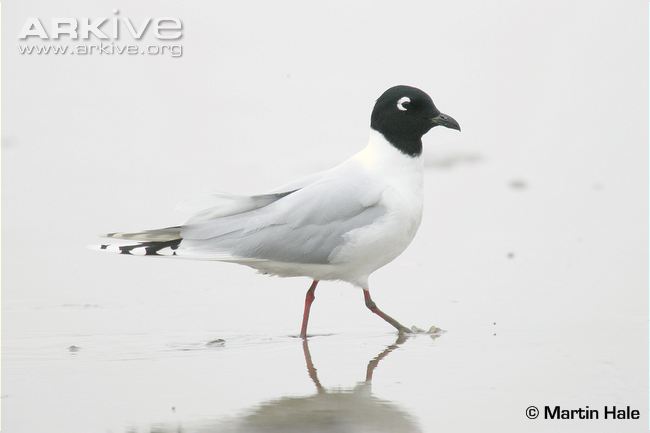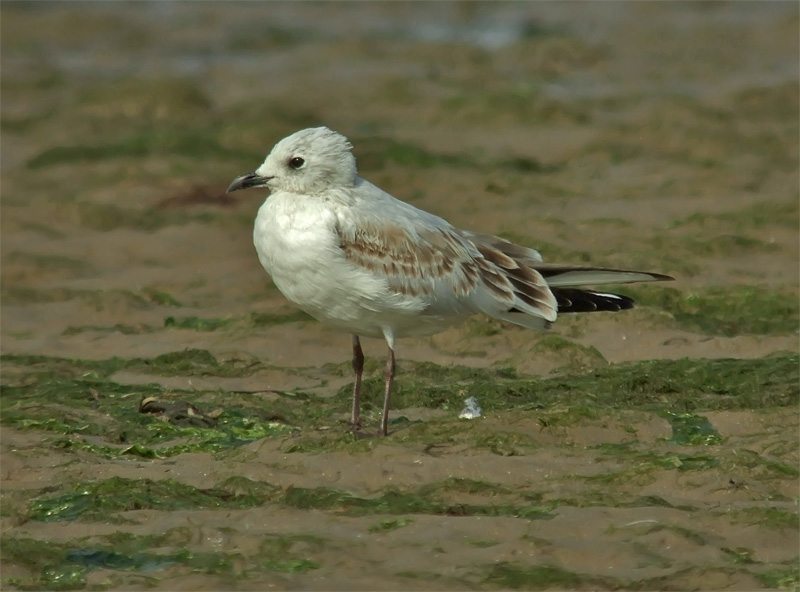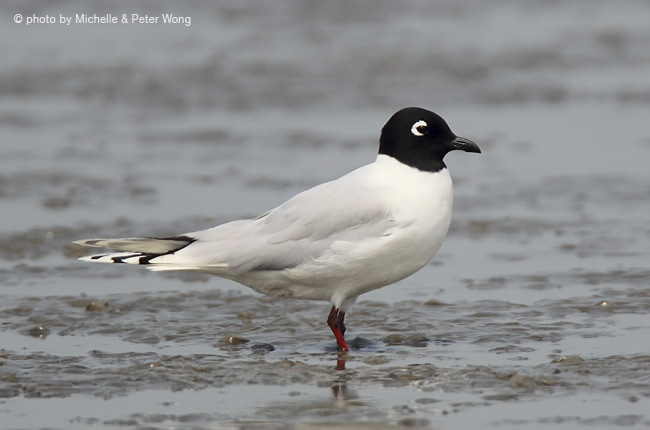
Larus saundersi
SUBFAMILY
Larinae
TAXONOMY
Chroicocephalus saundersi Swinhoe, 1871, Fujian, China. Monotypic.
OTHER COMMON NAMES
English: Chinese black-headed gull; French: Mouette de Saunders;
German: Saundermцwe; Spanish: Gaviota de Saunders.
PHYSICAL CHARACTERISTICS
11.4–12.6 in (29–32 cm), weight undocumented. Head and
nape black, white eye crescents, neck white with pale gray upperparts,
white flight feathers, tail white, underparts white,
scarlet bill with dark subterminal band. Nonbreeding adult
mainly white except for dark eye coverts (juvenile similar).
DISTRIBUTION
Coastal eastern China from Liaoning through Hebei and
Shandong to Jiangsu. Spends the winter from South Korea to
southern Japan and North Vietnam.
HABITAT
Breeds in coastal wetlands and winters along the coast or on
freshwater near the coast; not pelagic.
BEHAVIOR
Diurnal; little known of its
BEHAVIOR
.
FEEDING ECOLOGY AND DIET
Feeds mainly along coast on coastal mudflats and in coastal
lagoons.
REPRODUCTIVE BIOLOGY
All known colonies are on coastal salt marshes. Normally lay
three eggs, with clutches of five or six eggs suggesting femalefemale
pairs.
CONSERVATION STATUS
Vulnerable; total population estimated below 5,000 and might
be as low as 3,000. All seven known colonies are on lands
slated for development for oil exploration, agriculture, or aquaculture.
SIGNIFICANCE TO HUMANS
This gull breeds in coastal salt marshes that are highly prized
for agricultural development; therefore, their breeding is often
disturbed. Villagers collect eggs for food.
Photo Gallery of - Saunder’s gull




 Animalia Life
Animalia Life